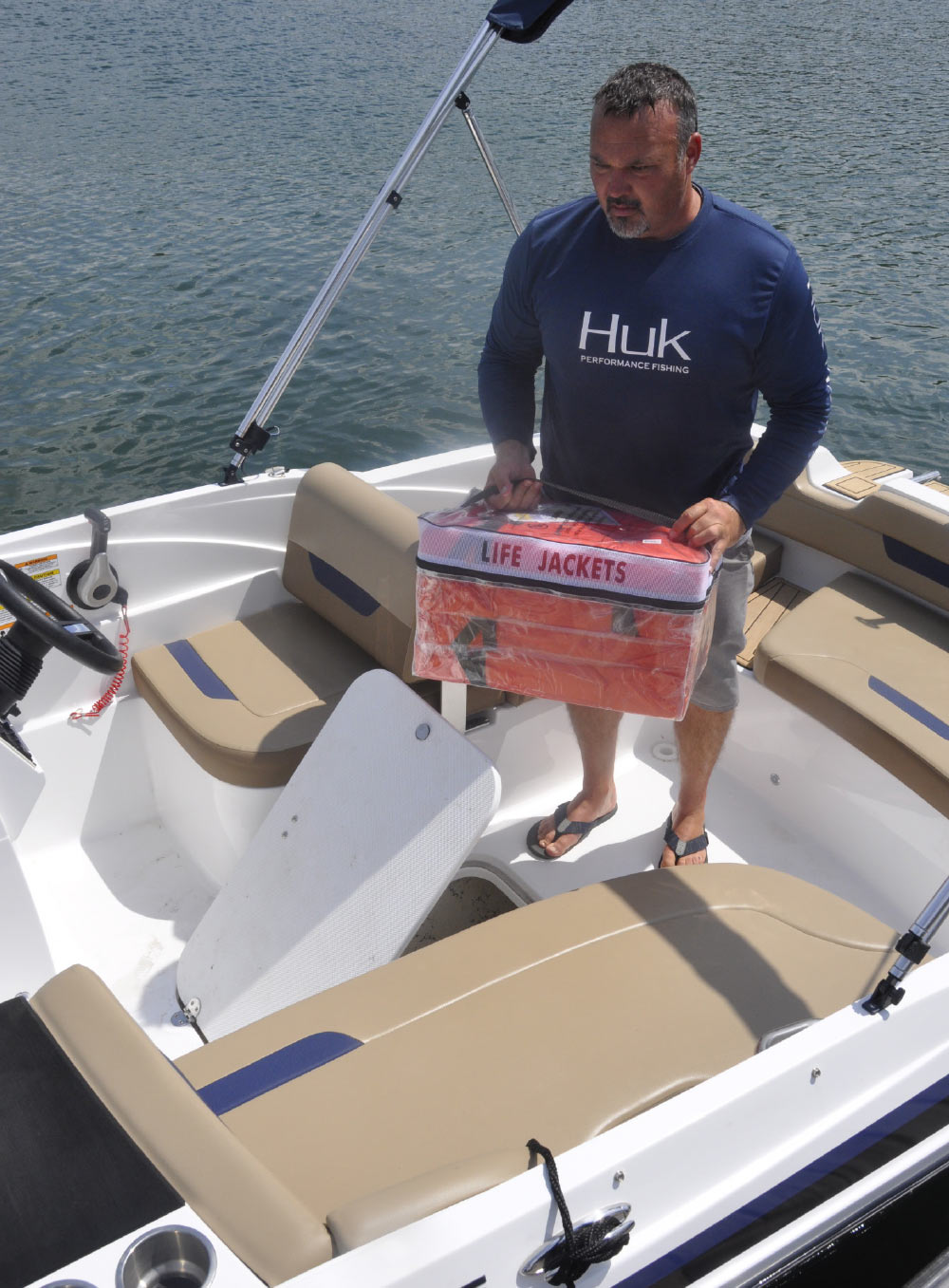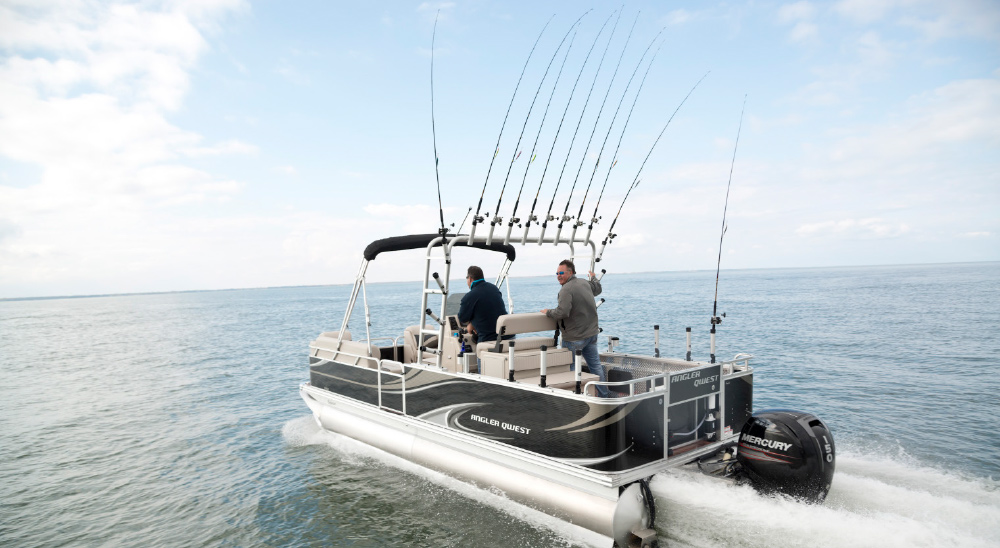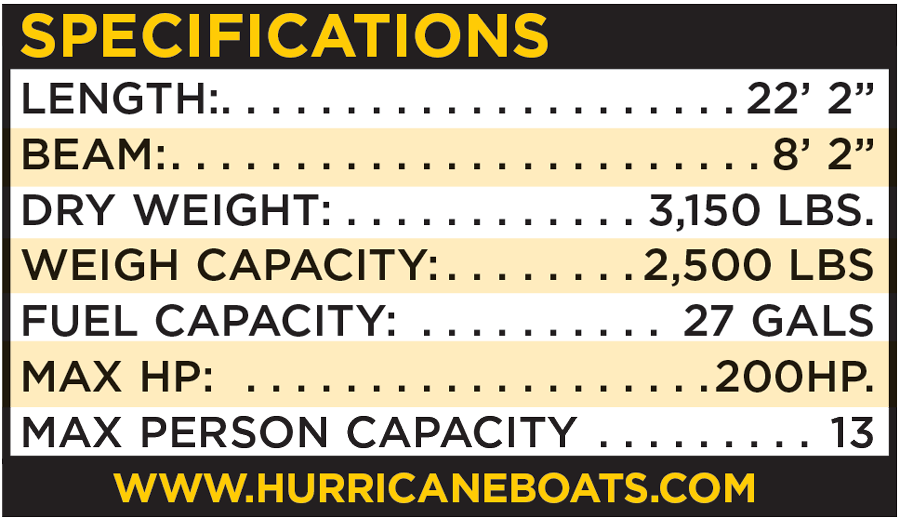
“You could always tell the rookies at Great Lakes fishing tournaments,” explained Balog. “They’re the ones who run and gun out across the lake, pounding the snot out of themselves and their boat. They may be the first to get to a particular spot, if their rig can take it, but the veterans know that over the course of a season, or over the course of a single tournament if conditions are rough, running that hard will take its toll on the boat, the tackle and the anglers.”
Each season, a few boaters pay that toll with their lives. Avoiding that ultimate payment is first and foremost on Balog’s mind when he rigs a boat for what he calls “big water fishing.”
“What you have to keep in mind when fishing big, wide-open waters such as Lake Erie, the other Great Lakes or any other large lake,” warns Balog, “is that in the event of a storm, things can get real ugly, real fast. We’re not talking seas building to the 3- and 4-footers over the course of an afternoon; we’re talking 6- to 8-foot walls of water that may have been 4-footers a few minutes earlier, and flat calm a half-hour before THAT!
“Also, when you’re fishing big lakes, you may be three or four miles from land. If you break down out there, it’s not just a matter of using your electric trolling motor to make a five-minute run to the closest shore. You break down four miles east of Pelee Island and it’s rolling, you can be in bad shape pretty quickly – electric motor or not.
“You’ve also got to consider that in some cases you’re dealing with wind and current,” he added. “People don’t realize that. You and your boat can drift a long way if your rig is dead in the water.”
Balog considers one of his most important pieces of safety gear to be a portable, 1000 gph bilge pump, which he fits with a 6-foot length of flexible hose. He places a large alligator clip on the end of each of the two 4-foot-long wires that feed electricity to the powerful Rule pump to make it truly portable and then keeps it handy.
“My boat has a pair of 1000 gph bilge pumps built-in, straight from the factory,” said the big water angler. “But if there’s a breakdown anywhere in my electrical system, and those pumps aren’t getting juice, or are broken themselves, I know I can break out the portable unit and with the clips attach it directly to the terminals of any battery I have aboard and get water flowing out of my boat fast.”
It’s a given that you should have all the USCG-required safety gear aboard any boat, according to Balog, but when fishing offshore on large expanses of water he stresses the importance of regular inspections of items like flares and fire extinguishers to make sure they are going to work when you need them.

To summon emergency assistance, Balog recommends having a portable VHF radio aboard, with extra batteries. As a backup, Balog never leaves the dock without a fully charged cell phone, which he has programmed with the number of the local USCG station and the local sea tow service.
“When I need the Coast Guard, I don’t want to be looking around for numbers or fumbling with buttons,” said Balog, who, more for convenience’s sake, also has programmed into his portable telephone the number for the pre-recorded National Weather Service forecast for the area he will be fishing.
When air temperatures are averaging below the 65 degree mark, Balog makes a habit of having a dry bag aboard, stuffed with a spare set of wool clothing, including socks, hat and gloves.
“If somebody aboard gets wet or I have a long wait for help,” he said, “I don’t want to be fighting hypothermia too.”
As such, he invests in foul-weather suits designed for offshore sailors, and keeps the PVC- lined rain gear aboard all season long.
“I carry a big-ass anchor and lots of line for it.” Balog said, adding that he equips his 22-foot outboard boat with 120 feet of rode attached to an 18-pound Richter anchor, which has a compact design made to sink fast and to hold on a variety of bottom types, using five beveled prongs that snag rocks or dig into mud or sand.
“I see so many boaters out here with tiny token mushroom anchors and 40 feet of line just to meet the regulations. What good is that setup going to do if you break down and have to hold your ground in 50 feet of water? Or even 20 feet if things are rocking!?”
The bottom line, no pun intended, is to take the time, trouble and expense as needed to prepare your boat when fishing on open waters. That may require different equipment and attitudes toward safety than when fishing your local inland reservoirs.


Standard features include rod storage, trolling motor harness, huge foredeck with fishing pedestal seats flanking a large flush-mounted livewell and a dedicated anchor locker. The cockpit features a captain’s chair with folding arms and rotating sliders, four-speaker Fusion RA60 audio system, and lounge seating – all under the protection of a power Bimini top. Telescoping boarding ladders can be found at bow and stern, the seating throughout is high quality and comfortable and storage options plentiful.
